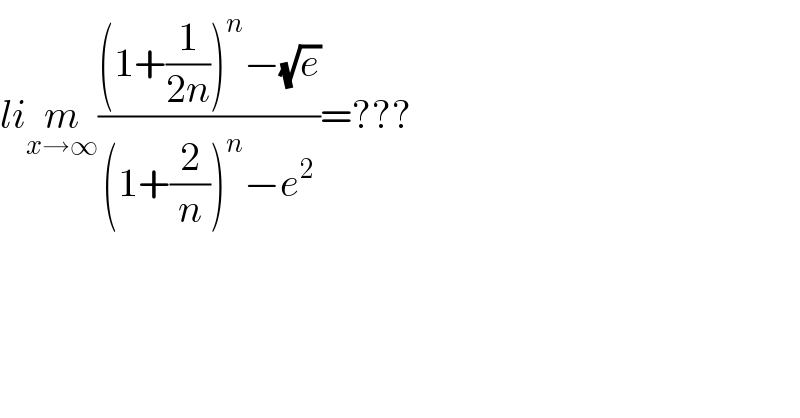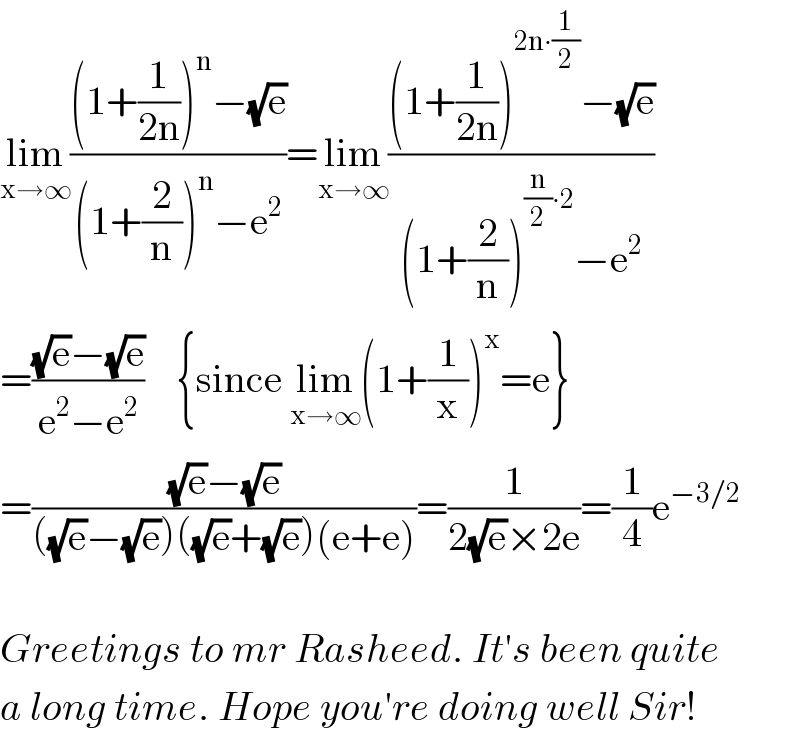
Question and Answers Forum
Question Number 119867 by Study last updated on 27/Oct/20

Commented by Dwaipayan Shikari last updated on 27/Oct/20

Commented by Ar Brandon last updated on 27/Oct/20

Answered by TANMAY PANACEA last updated on 27/Oct/20

| ||
Question and Answers Forum | ||
Question Number 119867 by Study last updated on 27/Oct/20 | ||
 | ||
Commented by Dwaipayan Shikari last updated on 27/Oct/20 | ||
 | ||
Commented by Ar Brandon last updated on 27/Oct/20 | ||
 | ||
Answered by TANMAY PANACEA last updated on 27/Oct/20 | ||
 | ||
| ||